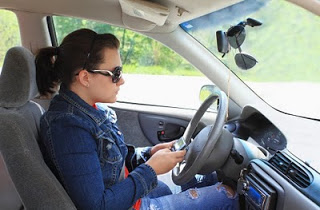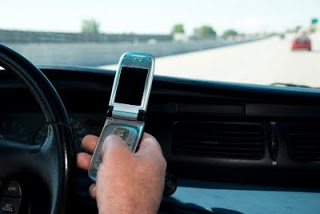
Driver Education Information That Could Save Your Life
May 21, 2010
Driver education can save thousands of lives. Don’t believe me? Imagine a car and a gun side-by-side. Tell me, which do you think has taken more teen lives? If you feel like the answer should be the gun, think about this for awhile: which one of the two do you see more often day-to-day? While most of the country pays close attention to the subject of gun control or the views of the National Rifle Association, very little focus is given to the number one cause of death for teens- Car Crashes.
The need for driver education is very important because so many of us take the right and the responsibility of driving every day for granted. We travel the roadways and go about our daily routines without the safety reminders we all need. And if you are a new driver— you need the reminders more frequently. We’re going to discuss the basics — the lessons you should be absorbing. This is by no means a substitute for actual driver education, just a summary of the information you may need a refresher on and could save your life.
Buckle Up – Before even starting the car or stepping on the accelerator, always fasten your seat belts. Each year, over 400,000 teen drivers between the ages 16 and 20 get injured in car crashes. Wearing your seat belt will help save your life. It will keep you from being thrown out of the vehicle, lessen the force of impact when hitting the dashboard or other interior spaces in the vehicle and reduce the collision forces on your internal organs. Coupled with air bags, what would be a fatal crash can be reduced to one with only minor injuries. This is also true for your passengers. Make sure they fasten their seat belts. In the event of a crash, if they are not properly belted they can literally become a flying object within the car causing serious injury themselves and other occupants.
Overcrowding – When driving a car, you are not only responsible for your safety, but also for the safety of all your passengers. Being a teen driver already increases your crash risk, but having other teens in the vehicle actually doubles that. Teens make up about 12% of all fatal car crashes in the United States. Overcrowding not only affects the way you drive overall, but causes distractions while driving. In some states, you can be ticketed and fined for driving with minors in the car.
Overloading – A fact you learn in driver education: for every 100 pounds in the car’s trunk, we lower the car’s fuel economy by 2%. This may seem like a low number, but it adds up in the long run. Not only that, but it shifts the center of gravity of your vehicle which in turn affects engine performance, braking distance, and how the vehicle reacts in an emergency. If you’re planning on carrying a lot of stuff — don’t stuff it in the trunk, call a moving van instead.
Emergency Kit – Driver education teaches you all aspects of driving: from trip preparation, operating a vehicle, laws and safety guidelines, defensive driving techniques and handling vehicle emergencies. Always make sure that, when faced with a vehicular emergency, breathe — stay calm. Panicking does not fix your car or improve the situation. If you plan ahead with the proper knowledge, a vehicle emergency tool kit including a spare tire, you’re going to be okay. If you can’t fix the vehicle, remember to have a fully-charged phone, with all your emergency numbers before leaving.
Car Maintenance – Do you know how to check your oil? Is there enough fuel in the tank? Can you check if your tires are worn? Can you check the tire pressure? Are your mirrors adjusted correctly? These are small things you should know how to do after attending driver education — and you should turn this into a routine!
Defensive Driving Techniques – Do you know where your blind spots are and check them each time? Do you keep a space cushion around your vehicle? Is there always a minimum of a two second following distance between your vehicle and the one ahead? Do you look left right left again before entering and intersection? These are some of the many techniques to be a defensive driver and a driver education course covers them.
Driver education is a small step for turning teens into competent drivers on the road. Not only that, but driver proficiency is a skill you will be carrying for life — knowing the small things could save your life in the future! If you have a good attitude towards learning, and you try to learn as much as you can, you are well on your way to becoming a great driver.

Teens: Celebrate Your Graduation Safely
May 14, 2010
Graduation is finally here! Let me guess, you suddenly feel older, more mature, and ready for anything? You are on your way into the work force or heading off to college. Either way, freedom is within reach and it is time to celebrate! There are so many parties, dinners, and other events, all in you and your peers’ honor. Temptation will surround you. Peer pressure will be high, and the euphoria of the event will be a different pressure. You may think something like, “if I have one drink, it is not a big deal, I deserve to celebrate.” You may hear, “just have one drink, it won’t hurt you.” Before you give into the temptation, know the facts. It could save your life, a friend’s life, or a stranger’s life.
Did you know?
- 40, 000 people die every year in motor vehicle accidents
- 16,000 of those deaths are alcohol or drug related
- Graduation night is one night where impaired driving is most likely
- There is a zero tolerance law for impaired driving under the age of 20
What are possible consequences of impaired driving?
- Death of you, a friend, or stranger
- Serious injury of you, a friend, or stranger
- Loss of scholarships
- Incarceration
- Suspension or Revocation of your driver’s license
- Fines
Think about this before you drink/drug drive. You have a best friend that you have known since you were eight years old. You both are excited about the after graduation party. You drive you and your best friend to the party. You both decide to have a few drinks and you even take a hit off the joint being passed around. After all, it is your night and you have the right to celebrate. That is the last thing you remember and now you are waking up in the hospital. You are seriously injured, but far worse, you find out that your best friend was killed in a car accident on the way home from the party, and you are responsible. Situations like this have happened before and it CAN happen to you? Do you want to wake up in the hospital with serious injuries and someone telling you that you are responsible for the death of your best friend? I doubt it.
What can you do to keep yourself and others safe?
- Don’t drink or take drugs
- If you are impaired, call for a ride (taxi, sober friend or family member, ect.)
- Have a designated driver
- Do not get in a car with anyone who is impaired
- Sleep over
We can’t predict what others may do. So if you are riding with friends, have a plan if they become impaired. Know who you can call, be willing to ask for the keys, and if possible find out if they plan on drinking before going to the party with them. You may need to make alternate arrangements to get to the party.
It is an exciting time and you should celebrate your success. Your success can end in a matter of seconds with one bad decision. True freedom comes with smart decisions. Celebrate your entry into your adult life by making good decisions on your graduation night. Stay safe by staying sober.

Taking Your Restricted Drivers License Across State Lines
May 11, 2010
Restricted license sure is a step-up from a learner’s permit, but it’s still not the unrestricted, seemingly-special license and for good reason. The graduated driving license (GDL) laws are designed to introduce teen drivers gradually into the driving environment by limiting distractions such as other teen passengers and cell phone use. The laws also restrict driving at night until the teen has gained a lot of driving experience. The GDL laws in your state may allow you to drive alone under certain circumstances but that law may not apply in other states.
No one under 18 – Most states only consider drivers eligible for application of the unrestricted license if they are over the age of 18. However other states, such as New York, prohibit unrestricted driving by anyone under the age of 21, even if they hold an unrestricted license in another state.
Each state’s DMV honors restriction put about by your state – If you receive a ticket in another state, your home state will be notified and your driving record will show the traffic offense just as if had been committed in your home state. Whatever points your home state applies to a particular offense will be added to your driving record. If you are caught violating the restricted driving rules of your state, you could be charged with driving without a valid license.
Double Trouble – If you commit a traffic offense in another state, you will have to pay the fines for that state and you will find that you will have points assessed in your own state. If the offense committed in another state puts you over the point limit in your home state, you could find that your license has been suspended. If your license is suspended in one state, all other states will honor that suspension.
Holding a driver’s license, even a restricted one means being responsible and following restrictions put about by the driver’s state. If you plan to travel to another state, you can go to that state’s DMV web site and find out if your privilege to drive in that state will be more or less restricted. It is better to do the homework first rather than finding out too late by receiving a traffic ticket.
For more information about driving laws visit your state see our DMV Department of Motor Vehicles Directory.

Measures Taken to Stop Distracted Driving
May 5, 2010
Each day, as it seems, more and more information about the dangers of distracted driving comes out — which increases the awareness of drivers about the growing problem. But what has been done? What exactly are organizations and individuals doing to combat distracted driving?
Forming Organizations
When you Google “distracted driving groups” it will yield several results — of individuals banding together, increasing awareness on distracted driving, on a local or country-wide basis. These can be as simple as asking people to pledge against distracted driving, like Oprah’s No Phone Zone, or wearing thumb socks to show a driver’s support for not texting while driving. These groups establish their presence online, in various social networking services, making it easier for their targets to get the message.
Enacting Laws
With the nationwide awareness on the shocking statistics of texting while driving, local governments have acted to put in motion laws that would prohibit cell phone usage while on the road. So far, more than 30 states have a law that places a ban on texting while behind the wheel, urging drivers to think twice before they pull out their phones, unless they want a penalty. For now, the options are being weighed on how to effectively enforce texting ban laws — but public support usually wins, and a law is enacted.
Phone/Text-blocker apps
Stopping phone use while on the road? Simple. Install a phone/text-blocker app. These applications interface the phone to the car’s GPS and if it sees that the car is in motion, the app disables the phone’s features. With crash-risk increasing 4 times/talking on the phone and 23 times/texting — it may help discipline the driver into not relying on their phones so much while on the road, until hopefully, they won’t have a need for such an application anymore. Learn more about apps like this including http://www.Textecution.com/.
Mock Crashes
Several local/teen driving advocacy groups have set up mock crashes to remind teen drivers (the group who are most likely to engage in texting while driving) what could potentially happen if they text and drive at the same time. In most places, the mock crashes are set up in a way that, the first things that teens going to school are going to see are wrecked cars, teen-drivers-playing-dead-with-phone-in-hand and lots of fake blood. It is a shocking, yet accurate statement that would inform teen drivers of the potential consequences.
Trial Runs
There are also trial runs — usually hosted by a state’s DMV along with several advocates against distracted driving — they allow drivers to experience firsthand what could happen should they attempt to text while driving. Set in an enclosed space, with only traffic cones as obstacles, there are only a few who manage to get through the course without hitting any of the cones while texting/driving. There are drivers who believe they are perfectly capable of handling both tasks, but running through a trial distracted driving course more or less proves them otherwise.
Ads
Various organizations would release ads that are either funny or serious in order to make their point. Some organizations do their advertisements a step above by involving the people themselves — they create contests asking drivers if they have what it takes to get the message across, in video form. Which is a good thing — it awakens an enthusiasm and awareness in teen drivers — which makes them think about safety when driving.
Distracted Driving Courses
The addition of cell phones, texting and driving, in-vehicle video entertainment, and navigation systems lengthens the long list of driver distractions. Research reveals that many new drivers do not recognize the risk of these activities when driving. To make teen drivers more aware of the risks there are courses like Dangers of Distracted Driving. The course creates a clear understanding of the distractions while driving and how they can cause crashes and cost lives.

